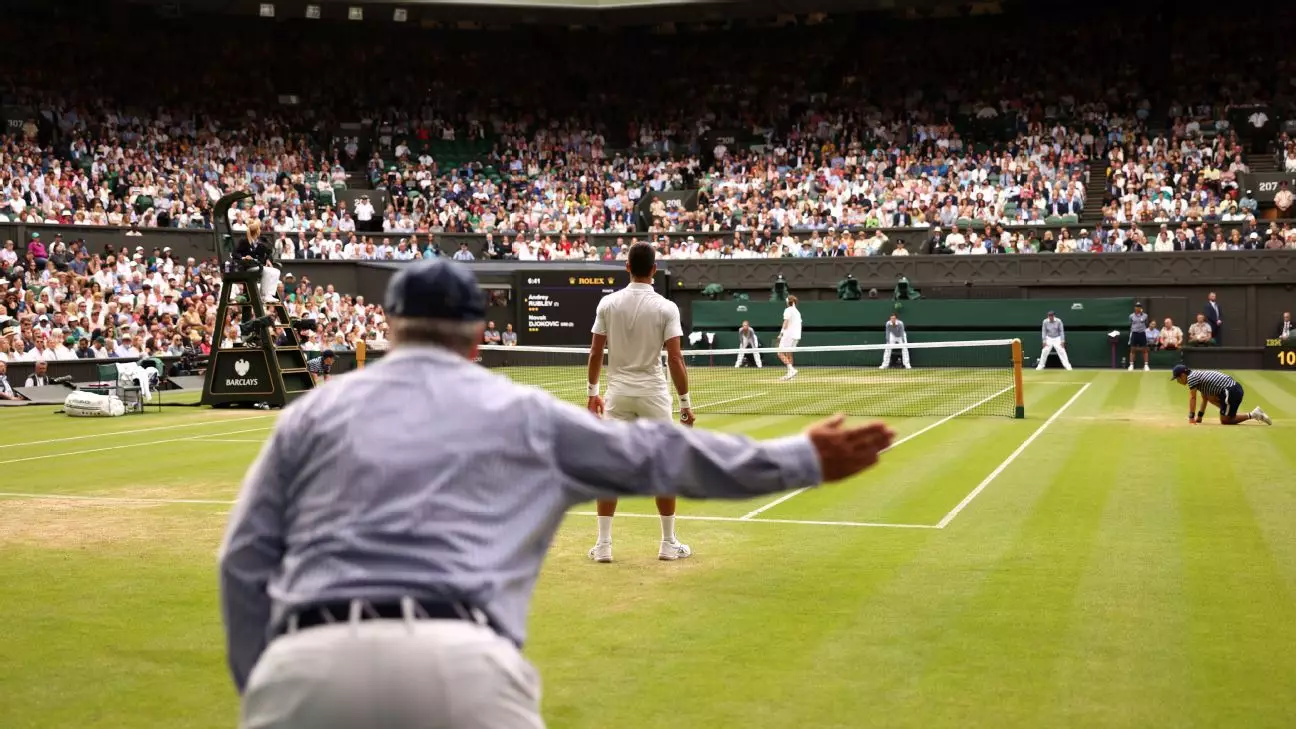In a landmark decision signaled by the All England Club, Wimbledon will eliminate line judges from the prestigious tournament starting next year, opting instead for an automated line-calling system powered by artificial intelligence. This notable shift towards technology marks a significant transformation in tennis officiating, as it will be the first time in 147 years that human line judges will not be present at the event. The transition aligns Wimbledon with a growing trend in professional tennis, where similar systems, notably Hawk-Eye Live, have already gained traction at other Grand Slam tournaments and the ATP Tour.
The evolution of line calling in tennis isn’t a sudden departure from tradition; it is a culmination of years of technological introduction that began with the manual officiating system. The AI line-calling systems that will debut at Wimbledon are not entirely new, having already been successfully tested in other tournaments, such as the US Open since 2020. The continued innovation raises questions about how the sport balances its rich heritage with the demands of modern-day audiences and players.
By moving towards a completely automated system, the All England Club seeks to provide precise and consistent officiating, a promise that is likely to resonate well with players who are accustomed to similar conditions in other events. However, there remains a lingering concern about the loss of human interaction in officiating—line judges traditionally added a layer of human judgement that is, in its own right, fundamental to the spirit of sport.
Sally Bolton, the CEO of the All England Club, articulated that the decision was the result of thorough consultation and testing phases. By considering feedback and results from earlier implementations, the club believes that AI offers the robustness required for officiating at such a historic tournament. This consideration of player impact indicates a commitment to a fair and reliable playing environment, something that is crucial for sustaining the integrity of the competition.
It is vital to recognize, however, that while the pursuit of accuracy is admirable, the absence of human judges marks a significant shift away from the traditions that have shaped the game for generations. Line umpires, often seen as custodians of the sport, have provided not just judgement, but an essential character to matches. Their roles should not be easily overlooked in the narrative of technological advancement.
In addition to this transformative change in line judging, Wimbledon plans to alter the start times for the singles finals next year. Both the men’s and women’s singles finals are set to begin at 4 p.m. local time, following their respective doubles finals. This alteration reflects a broader effort to enhance the viewing experience and elevate the tournament’s profile in a competitive sports landscape.
Ultimately, as Wimbledon takes these bold steps into the future, it must navigate the fine line between innovation and tradition. Fans and players alike will be watching closely to see how these changes unfold and what they mean for one of the most hallowed grounds in sporting history. Balancing progress while honoring the essence of the game will be a critical challenge in the years to come.


Leave a Reply